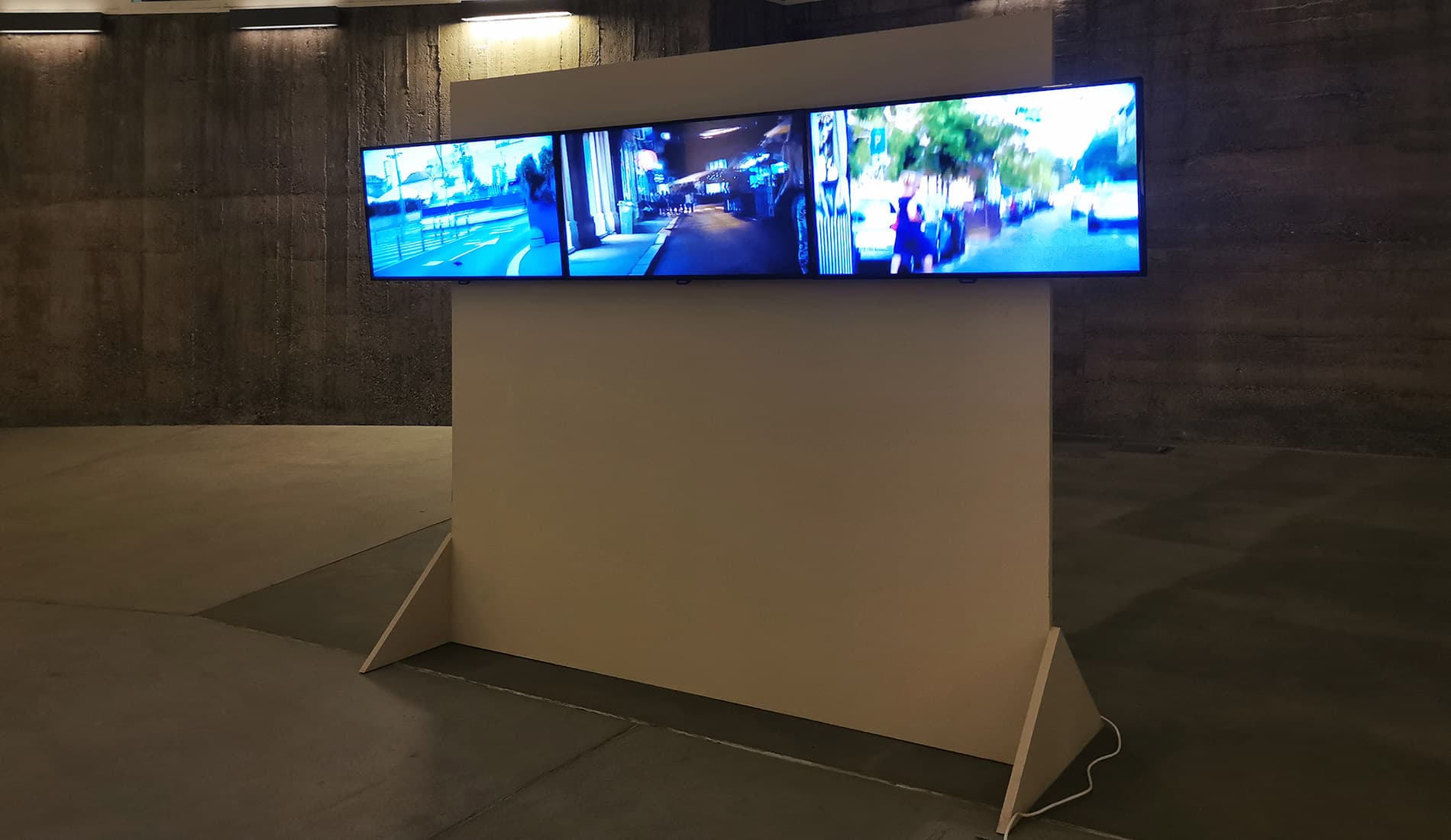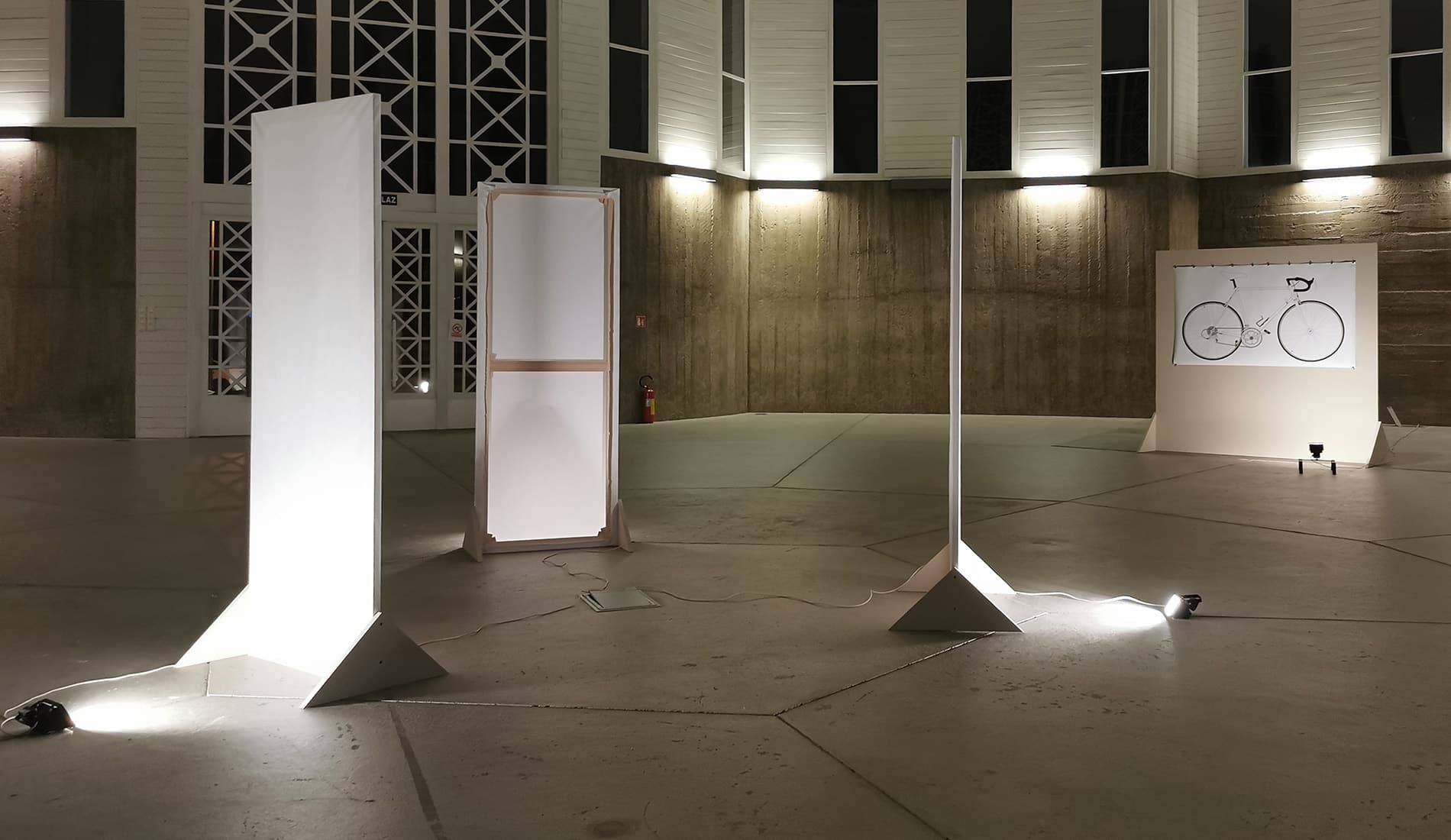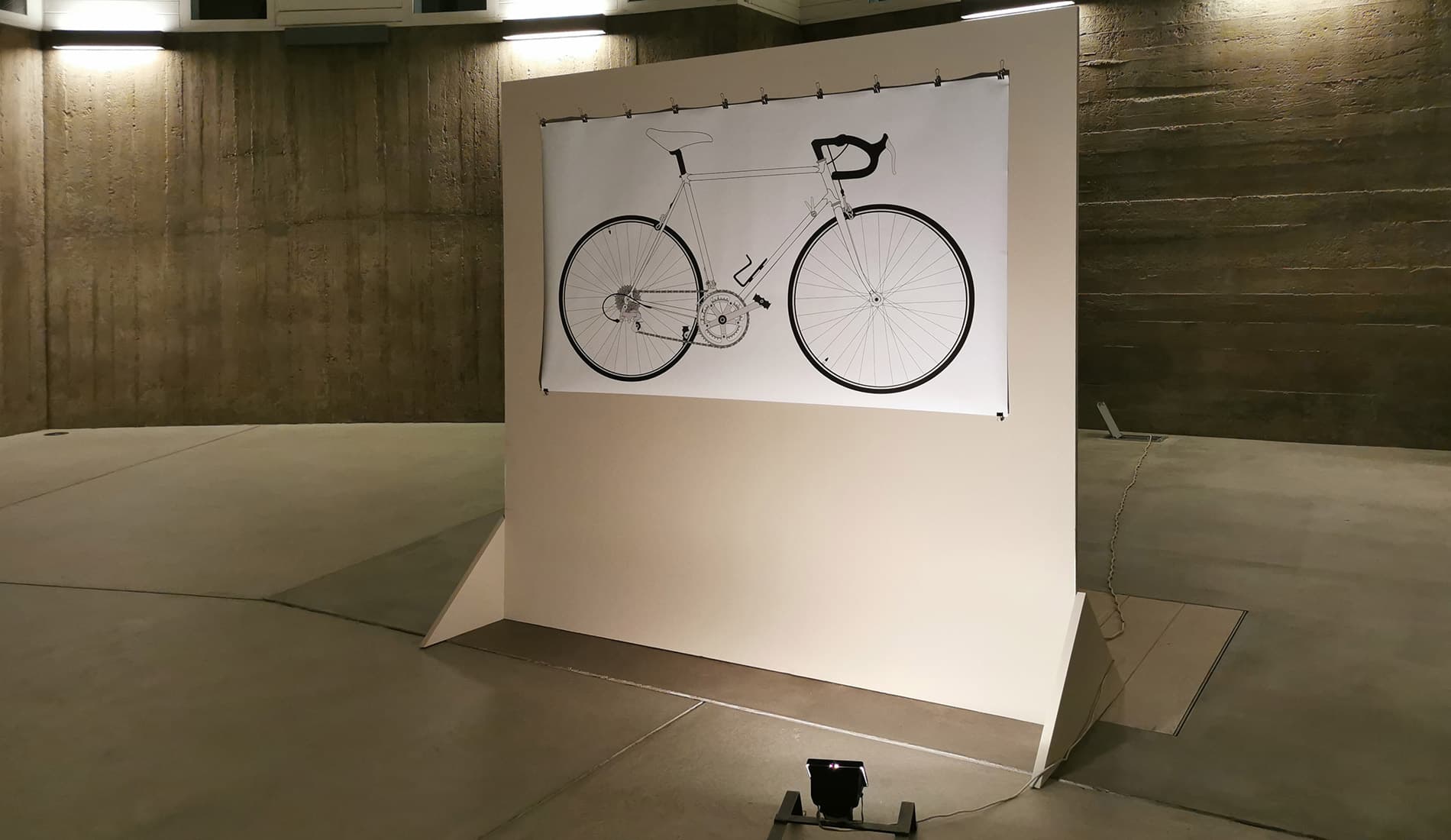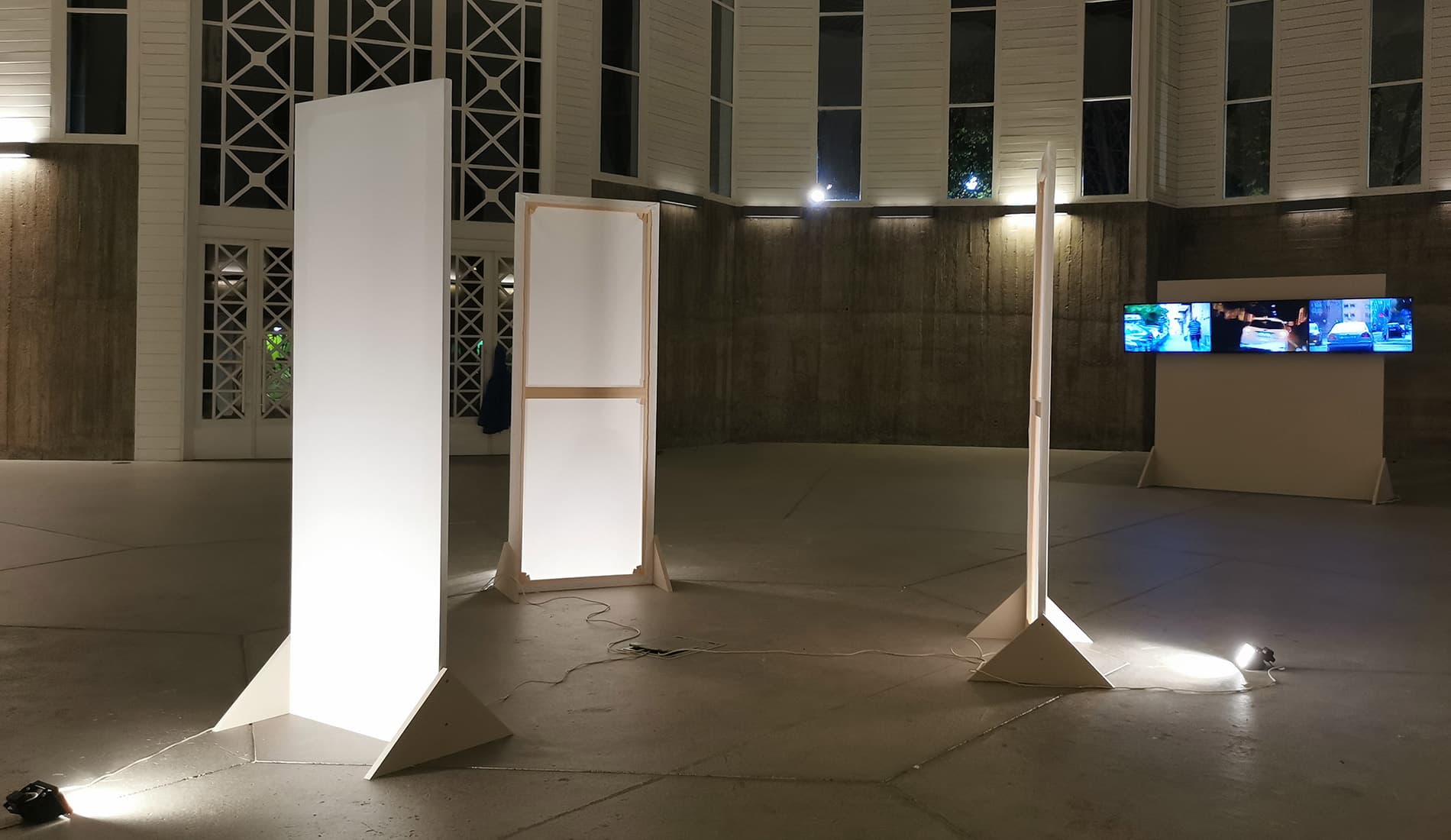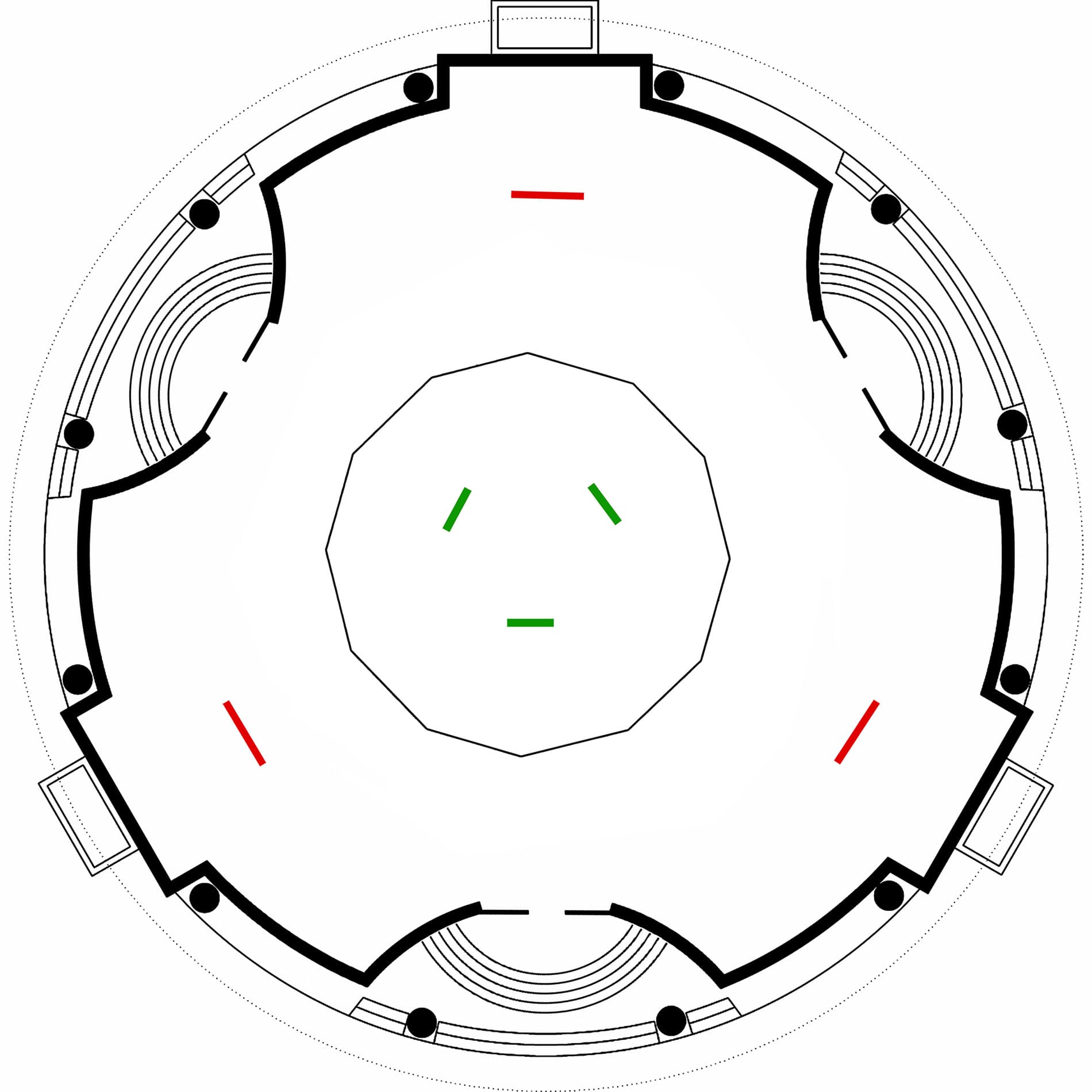
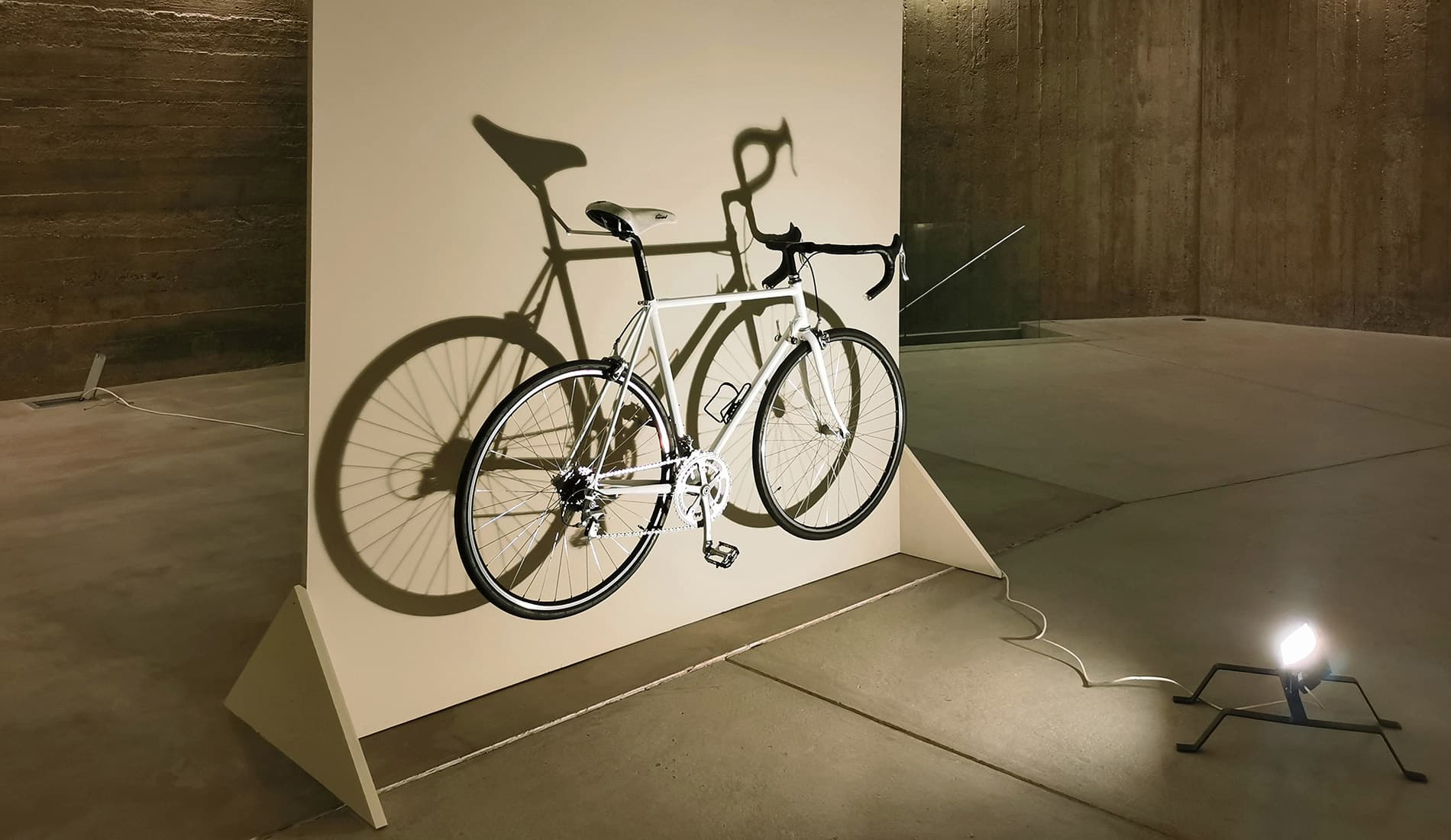
I am quite sure that the hypothetical verbal structure implied by an ellipsis preceding the title phrase ...to Chaos is by no means irrelevant. In any case, the relationship between the exhibition title and its plan is astonishing. I intentionally call it a plan rather than a concept or a synopsis, for example. I am referring thereby to the layout of objects that the author of the exhibition, Davor Preis, has drawn on the floor plan of a circular building – the French Pavilion, in which the exhibition should open in less than a month. This plan is anything but chaotic, and even less so are the objects that are about to be placed in the exhibition space in precise and perfectly predetermined interrelations. Thus, the relationship between the title ...to Chaos and the planned way of its articulation is indeed surprising. But only at first. If I focus on the relationship between the concepts of plan and chaos, I will at first conclude that they are contradictory and mutually exclusive. However, the plan for realizing the exhibition might hypothetically get thwarted by some of the recently frequent, to put it mildly, natural disasters. That is why in the subtext of this text I inscribe the current time of writing, during which I reflect upon the galloping Covid-19 epidemic, the ground still trembling in afterschocks of the devastating March earthquake, and the July flood, to which I can now add today’s terrorist attack in Zagreb’s Upper Town. Chaos? And I wonder if I should understand the English title ...to Chaos in terms of a relation of something (or someone) to chaos, a dedication to chaos, or a specification of a particular direction of movement – into chaos.
An encyclopaedic entry says that the notion of chaos in philosophy implies a state of disorder, without form, definiteness, harmony, or law, recalling that the ancient cosmogonic teaching on chaos sought for the beginning of everything in chaos, and this beginning was understood as disharmony and unformedness from which the world later emerged as orderliness – the cosmos. The notion of cosmos has been present in the referential field of Davor Preis’s works for quite a while. In 2004, he set up an installation called Grounded Solar System, which incorporated Kožarić’s Grounded Sun and materialized Nine Views, marking the “grounded” positions of Mercury, Venus, Earth, Mars, Jupiter, Saturn, Uranus, Neptune, and Pluto in Zagreb’s urban fabric. If I were to describe very concisely the modality of the appearance of objects that marked the act of grounding the Solar System, I would call it sophisticated and discreet.
It is with equal subtlety and convincing reasoning that Davor Preis has composed the exhibition ...to Chaos , whereby the disposition of objects that define its internal and external viewing trajectory is a kind of resonance of the circular trajectory of the perimeter wall of the building within which these objects are exhibited. The inner ring is indicated by three seemingly identical and vertically positioned objects of equal proportions, placed at even distances. These are three stretchers, supported by a low wooden stand that keeps them in a vertical position. Each of them has a white textile surface stretched like a painting canvas. Here the visually identical is not substantially the same, and the difference is perceptible at the haptic level. One must touch the stretched surface to make the barely visible become clearly palpable. By exemplifying the necessity of a close physical encounter between the living body and what is conventionally placed at a distance necessary for observation, Preis intones the theme of temporality, and together with it articulates a series of questions about neglected, invisible histories.
Specifically, the three white “monoliths” placed in the centre of the French pavilion spell out a kind of history of textile with the texture of their own materiality. The first is fabric – cotton cloth. It is produced in a weaving process in which the weft and the warp are compressed. Archaeological findings confirm the existence of fabric in the Neolithic period, and there are indications that the weaving technology was applied as early as the Palaeolithic. The second stretcher carries polyester knit. Unlike weaving, with the right angle as its basic postulate, knit is created by means of manual or industrial connection of stitches or loops. It is assumed that knitting was invented around 1000 BC by nomads in the Arabian desert. Knitting was then practiced in Egypt, from where it reached France and Italy via Spain in the 11th century, as the existence of knitting guilds is attested there in the High Middle Ages. The third textile object that Davor Preis uses in the French Pavilion indicates the chronological sequence of events, as it is made of Retex – a non-woven fabric type created by thermal gluing of thin polypropylene fibres. It is similar to paper and a product of the 20th century.
This inner ring is juxtaposed to an outer one, marked by the placement of three panels with a visualization of the bicycle concept. The first panel features a digital graphic representation of a bicycle at a scale of 1:1, the second a suspended white Bianchi bicycle manufactured in the 1980s, and the third three monitors showing the footage of what a camera attached to the bicycle handlebar recorded during three different rides, more or less along the same city route: at dawn, during the day, and at night. And this is not a relational set that would be performatively analogous to Kosuth’s seminal work One and Three Chairs (1965). For, just like the three textile “monoliths” expose the difference in the structure of textiles created by the application of different technologies in the production of fabric (the right angle), knit (the loop), and Retex (the chaotic fibre arrangement), thus the bicycle “vignette” focuses on the dialectics of order and chaos.
Davor Preis is a passionate bicycle collector, cyclist, and city explorer. The bicycle is a nineteenth-century invention, and the view of a cyclist differs significantly from that of the flâneur. Between 2013 and 2016, Preis produced his work Towning, in which he used a GPS device during all his bicycle rides and then drew out what the device recorded on a Google Earth map of Zagreb. In his words, “a series of several hundreds of city routes creates an interesting web on the map, 'the bloodstream of my movement'.”
In his Praise to the Bicycle, anthropologist Marc Augé has linked the bicycle to the chaos theory as follows:
"The ‘pedal stroke effect’ is the new fashionable expression. It has replaced the expression 'butterfly effect'. You may recall the lecture given by the meteorologist Edward Lorenz in 1972 and the provocative question he used as a title: 'Does the Flap of a Butterfly’s Wings in Brazil Set Off a Tornado in Texas?' Social science researchers today ask themselves whether chaos theory might not be applied even more relevantly to global reality. With the sharp sense of retrospective predictability that often characterizes them, they point out that perhaps everything started one day with a municipal initiative in a city in northern Europe, to essentially and officially protect the first pedal stroke of a city rider. The example stuck, as we’ve seen in France, first in a few small cities and then in Lyon and Paris, and quickly in all other French cities, but also, and even more so, in all the large metropolises throughout the world. The change in quality of life and the improvement in the ecological health of the planet are obvious benefits for the most part, but the collateral effects are in fact stupefying, notably in the social and political realms. Class barriers have opened or collapsed. Powerful oil companies have fewer and fewer customers, and, facing consequences that delight the more cynical of observers, religious proselytizing has faded away. It seems as if cycling polytheism has overcome petroleum monotheism.” *
(*Marc Augé, In Praise of the Bicycle, trans. Teresa Lavender Fagan (London: Reaktion Books, 2019), p. 38.)
Augé, who states in the first sentence of his book that it is impossible to sing the praises of the bicycle without talking about yourself, included the quoted passage in a chapter titled “Utopia”. A kind of historical transversal that I recognize in Preis’s dialogue with the exhibition space leads me to a photograph of the interior of the French Pavilion taken in the 1930s, which I have found on the Internet. This masterpiece of modern architecture was built in 1937 as an exhibition pavilion of the French Republic at the then Zagreb Fairgrounds, the forerunner of today’s Zagreb Trade Fair. The image shows that the French used to exhibit the latest car models there, topped by an airplane. Eighty years later, Davor Preis has replaced them with a bicycle.
And finally, Alfred Jarry, the founder of pataphysics as the science of imaginary solutions and the forerunner of the theatre of the absurd, a writer without whose King Ubu Duchamp’s Rotoreliefs would have never come into existence, used to swing himself on a bicycle and ride the streets of Paris until he fell from exhaustion.
Zagreb, October 2020
Leonida Kovač
